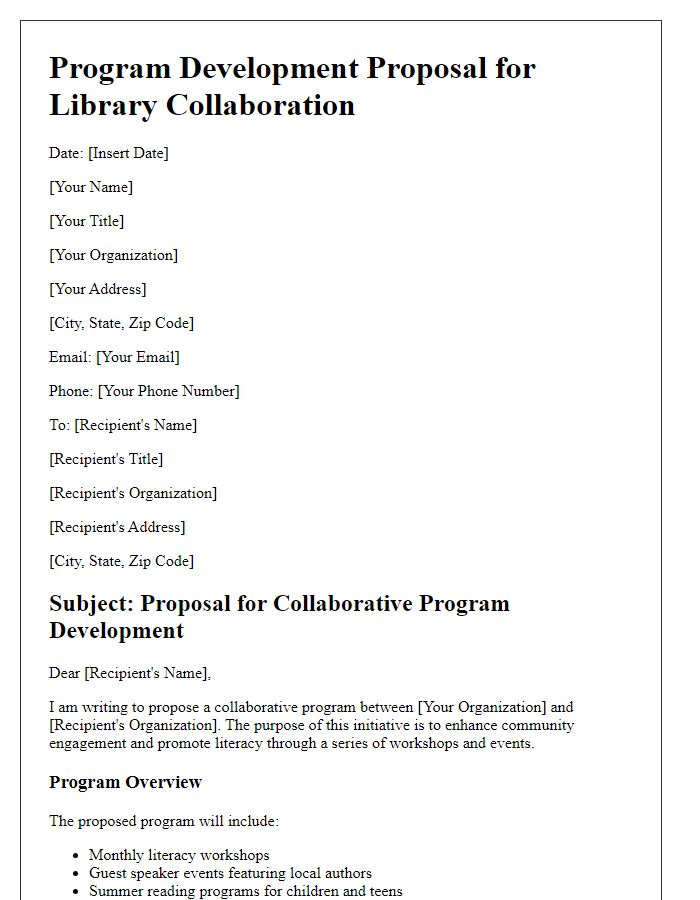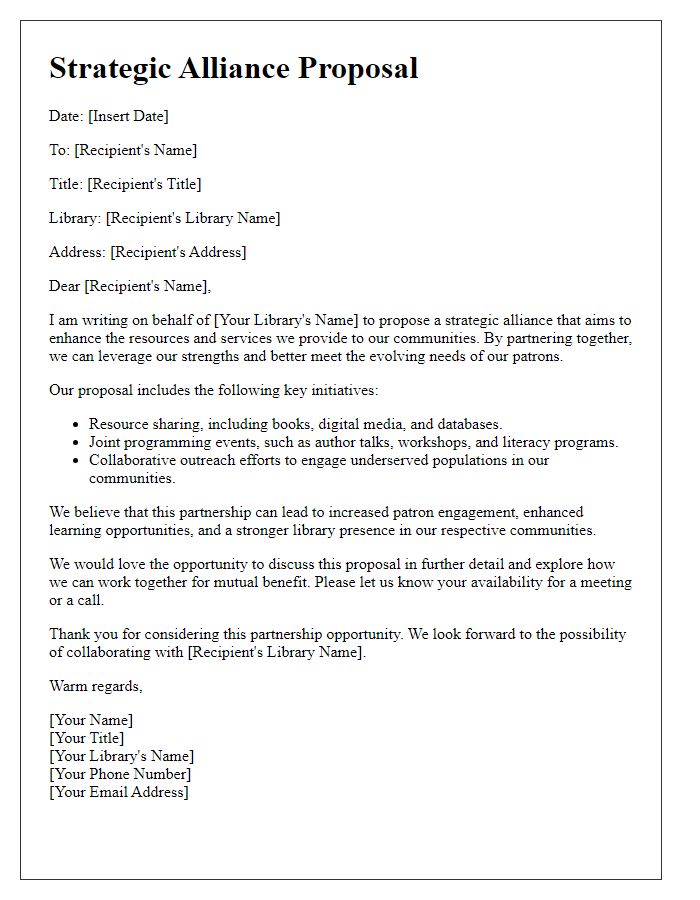Are you looking to strengthen community ties and foster a love for reading? Partnering with local libraries can be a fantastic way to enhance educational resources and engage residents of all ages. Imagine the possibilitiesâstorytelling sessions, book clubs, and resource sharing that bring people together! Join us as we explore the benefits of library partnerships and how they can transform our community into a hub of learning and creativity.

Introduction and purpose
A library partnership proposal aims to enhance community engagement through collaborative initiatives between local libraries and educational institutions or nonprofit organizations. Libraries, such as the New York Public Library, serve as vital resources for knowledge and cultural exchange, hosting numerous events including author readings, workshops, and literacy programs. The purpose of this partnership is to develop joint programs that facilitate access to literature, foster reading habits among children, and provide educational resources to underserved populations, thus promoting lifelong learning. Connecting with local schools, such as Lincoln High School, can create synergies that strengthen community ties while improving educational outcomes for students.
Alignment of goals and objectives
A successful library partnership proposal requires a clear alignment of goals and objectives. Libraries, such as the New York Public Library, aim to enhance community engagement and promote literacy while fostering lifelong learning. A potential partnership with educational institutions, like City University of New York, can create rich programs and initiatives focused on increasing access to resources. Collaborative projects, including workshops or reading programs, can meet shared objectives: improving educational outcomes, expanding digital literacy, and nurturing a love for books and learning among diverse populations. Overall, a well-defined partnership can create synergy, enabling both entities to thrive and expand their impact in the community.
Benefits and opportunities
A library partnership can significantly enhance community resources and engagement through various benefits and opportunities. Collaborations can enable access to diverse collection materials, including academic journals, historical archives, and newly published books, fostering a culture of learning among patrons. Joint programs, such as author talks and literacy workshops, can attract larger audiences, increasing foot traffic and membership numbers. Resource sharing initiatives can provide broader access to digital catalogs and interlibrary loans, ensuring community members can acquire rare titles without geographical limitations. Furthermore, partnerships can facilitate grant opportunities for community development projects, securing funding for technology upgrades or children's literacy initiatives. Local businesses may also benefit from promotional opportunities through co-hosted events, creating a ripple effect of community involvement and support.
Partnership terms and expectations
Establishing a partnership between local libraries and community organizations can foster increased access to resources, educational opportunities, and social engagement. Each library, such as the New York Public Library (established in 1895, serving over 18 million patrons annually) and the Los Angeles Public Library (with 73 branches and a diverse collection of over 6 million items), can set clear expectations regarding collaborative programs, resource sharing, and funding responsibilities. Community organizations may outline goals, such as enhancing literacy through workshops or organizing cultural events that promote local history. Evaluation metrics, like attendance rates or participant feedback, should be agreed upon to assess the partnership's success over time, ensuring both parties benefit and contribute meaningfully to the community's growth and development.
Contact information and next steps
A library partnership proposal requires precise contact information and a clear outline of next steps to facilitate communication and collaboration. Essential contact details include the library's full name, physical address (e.g., 123 Main Street, Springfield, IL), primary contact person's name (e.g., Sarah Johnson), email address (e.g., sjohnson@library.org), and phone number (e.g., (555) 123-4567). Next steps should outline a timeline for follow-up meetings, potential dates for discussions, and proposed agenda items, providing clarity on how the partnership can progress smoothly. Additionally, including an invitation to visit the library (e.g., schedule a tour on a specific date) may enhance engagement and foster a successful partnership.
Letter Template For Library Partnership Proposal Samples
Letter template of cooperative project proposal for library collaboration

Letter template of community engagement proposal for library partnership

Letter template of program development proposal for library collaboration











Comments